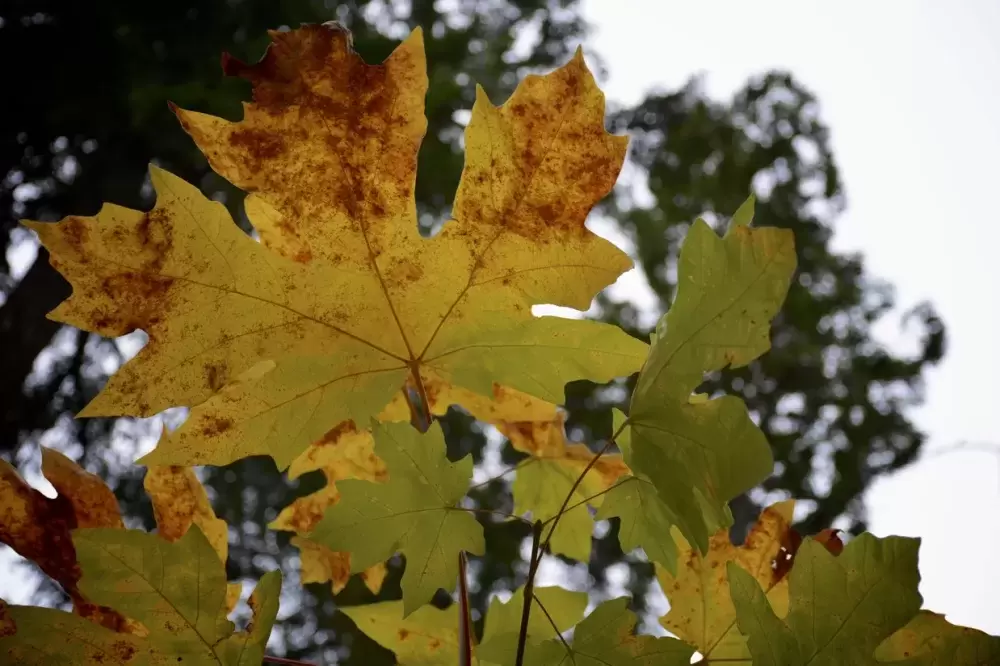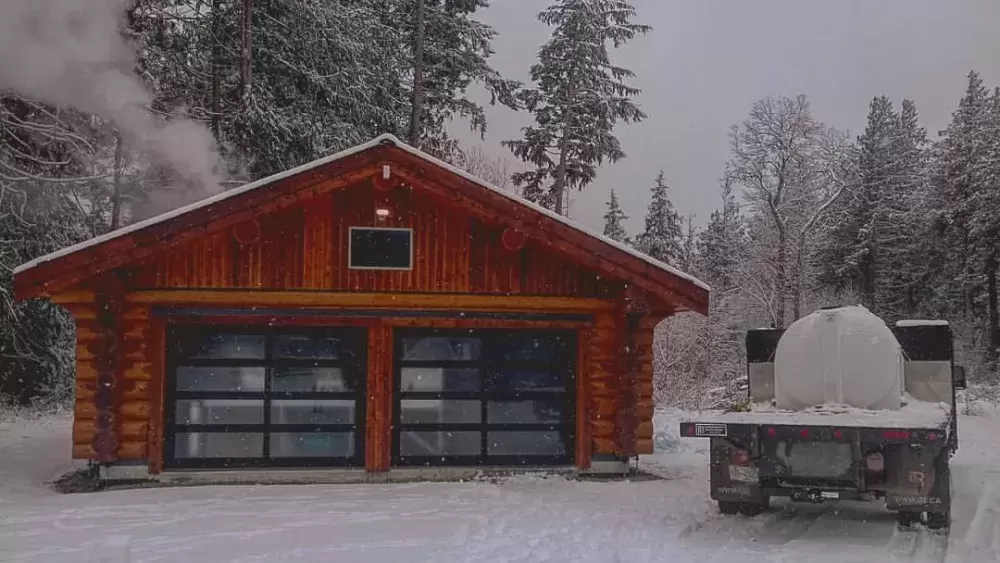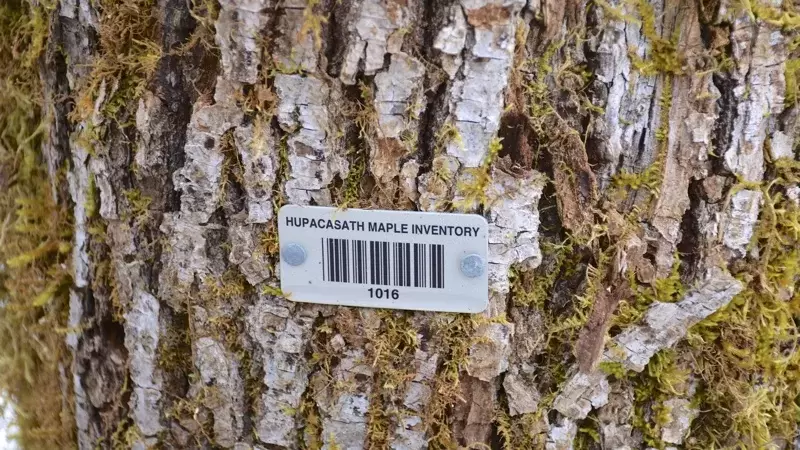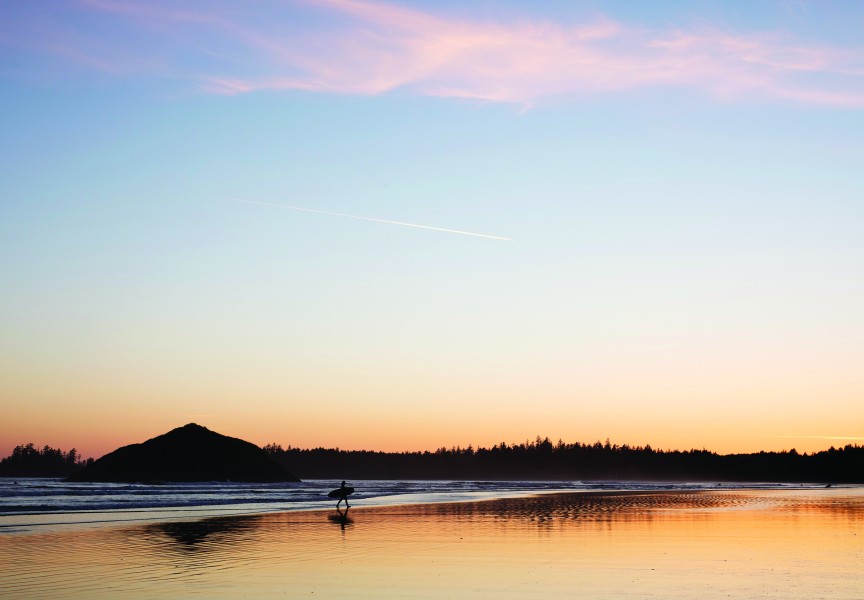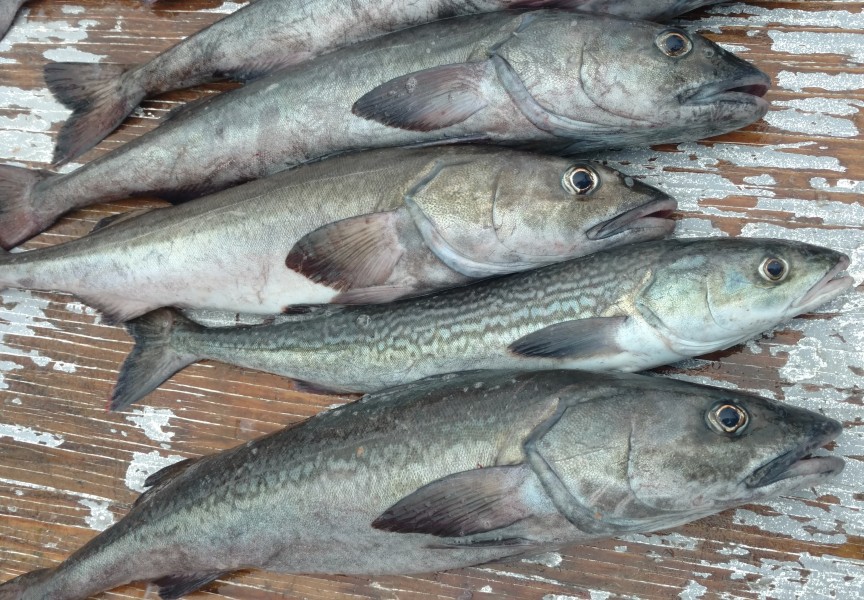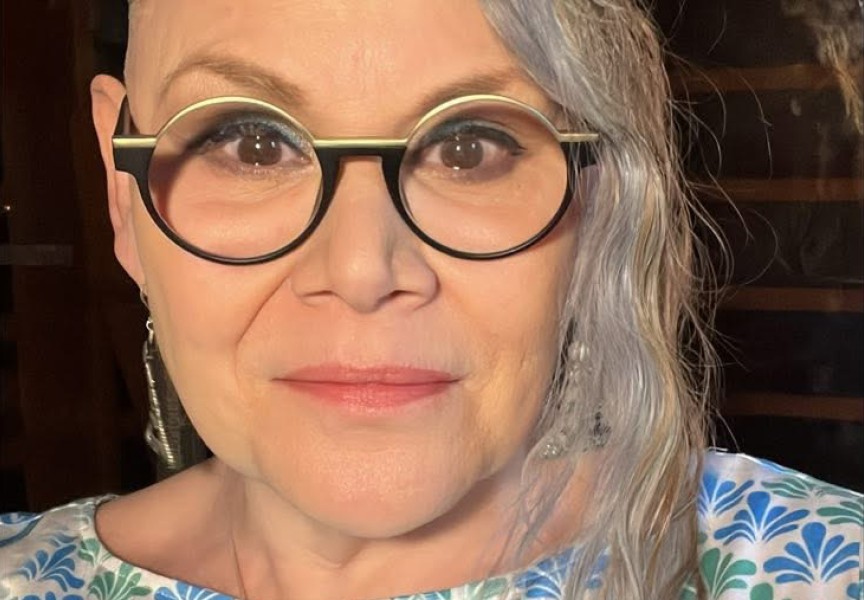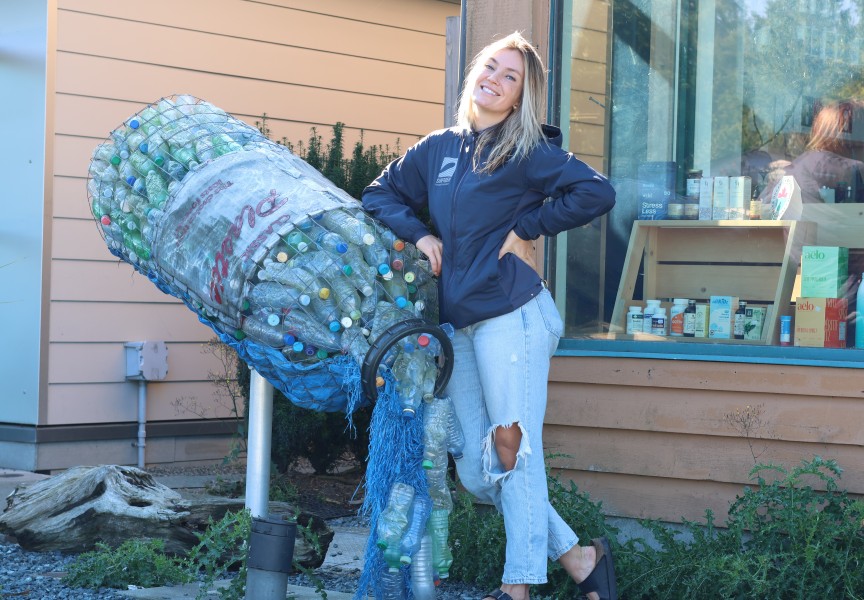Hupačasath First Nation on Vancouver Island’s west coast is creating a unique flavour of maple syrup using sap from bigleaf maple trees.
As part of the Indigenous Bioeconomy Program, the nation is benefitting from nearly $112,000 in funding from the province towards the business venture, named Kleekhoot Gold.
The funding is designed to support Indigenous partners lead the development of a forest bioeconomy, according to the Ministry of Forests.
“Bigleaf maple has always been used by Hupačasath for its wood, for smoking fish and game,” said Hupačasath First Nation Elected Chief Brandy Lauder. “Some of our members now also use the bigleaf maple syrup to glaze the fish and meat before smoking it with the maple wood.”
Collecting syrup from bigleaf maple trees is a more complex production process, which makes the syrup up to four time more expensive than the price of standard maple syrup sold in supermarket, said Kleekhoot Gold.
“To put the colossal size of the eastern sugar maple industry in perspective,” Kleekhoot Gold said around 17.4 million gallons of maple syrup was produced from sugar maples in eastern North America in 2019. Meanwhile, the combined bigleaf syrup production amounted to less than 500 gallons.
The syrup is one of the rarest tree syrups available in today’s organic syrup market, according to Kleekhoot Gold.
“Sap from west coast bigleaf maple trees is only one per cent sugar,” said Kleekhoot Gold.
This means that 100 litres of sap might deliver one litre of syrup, Kleekhoot Gold added.
The syrup has a distinct taste that can vary from notes of butterscotch and vanilla, to a more robust molasses flavor near the end of season.
Named after one of the nation’s ancestral village sites, Kleekhoot is home to an abundance of bigleaf maple trees that are unique to B.C.’s west coast. Located on the “confluences of the Sproat and Stamp rivers”, Lauder said the village site was inhabited by one of the original tribes of Hupačasath Kleekhootaht, and continues to be occupied today.
Lauder said Kleekhoot Gold has provided employment opportunities for youth and brought the nation’s members back into the forests with a “renewed sense that there is more to the forest than just logging opportunities.”
Hupačasath values developing businesses that “contribute to a forest bioeconomy by making use of untapped natural resources in a sustainable way that protects forests and creates jobs,” said Kleekhoot Gold.
“Riparian areas, such a rivers and streams, are usually off limits to logging operations,” the company added. “Conveniently, these areas are where maple trees grow best. The winter harvest of maple sap allows for unique job opportunities in the months that traditionally have less seasonal work available.”
Since it was launched in 2015, Hupačasath has invested over $300,000 into the business to bring the product to market. The syrup is sold at the Hupačasath’s band office, as well as select local events.
Josie Osborne, MLA for Mid Island-Pacific Rim, recently visited the production facility and said Kleekhoot Gold “is a great example of how innovative forest management can help strengthen communities.”
“People in the Alberni Valley take so much pride in locally grown food, and bigleaf maple syrup makes a sweet addition to our local food landscape,” she said in a release.
Since 2019, the Indigenous Forest Bioeconomy Program has delivered 41 projects in partnership with 24 Indigenous communities and organizations across the province. These include essential oils being extracted from conifer needles and textiles made from bark.
Around $1,126,000 was used to fund the program in 2021 and 2022, and an additional $3.9 million is being contributed this year to move projects to commercialization faster, according to the ministry.
“By locally producing maple syrup from the abundance of bigleaf maple trees unique to the west coast of British Columbia, the Hupačasath First Nation is showing us how we can all benefit from our forests in new and sustainable ways,” said Doug Routley, parliamentary secretary for forests.

